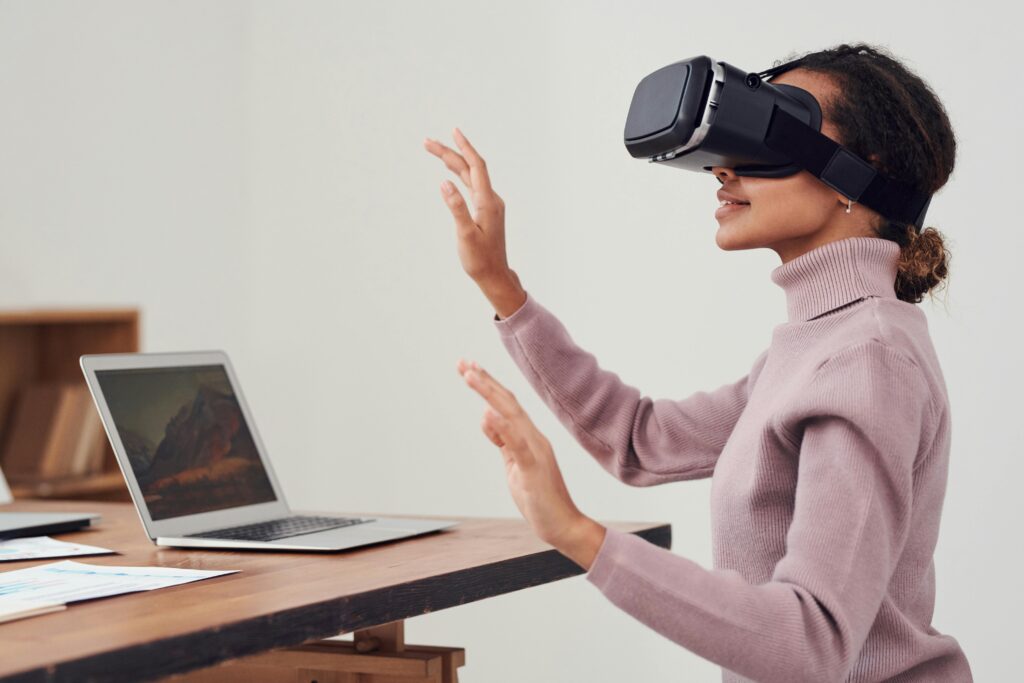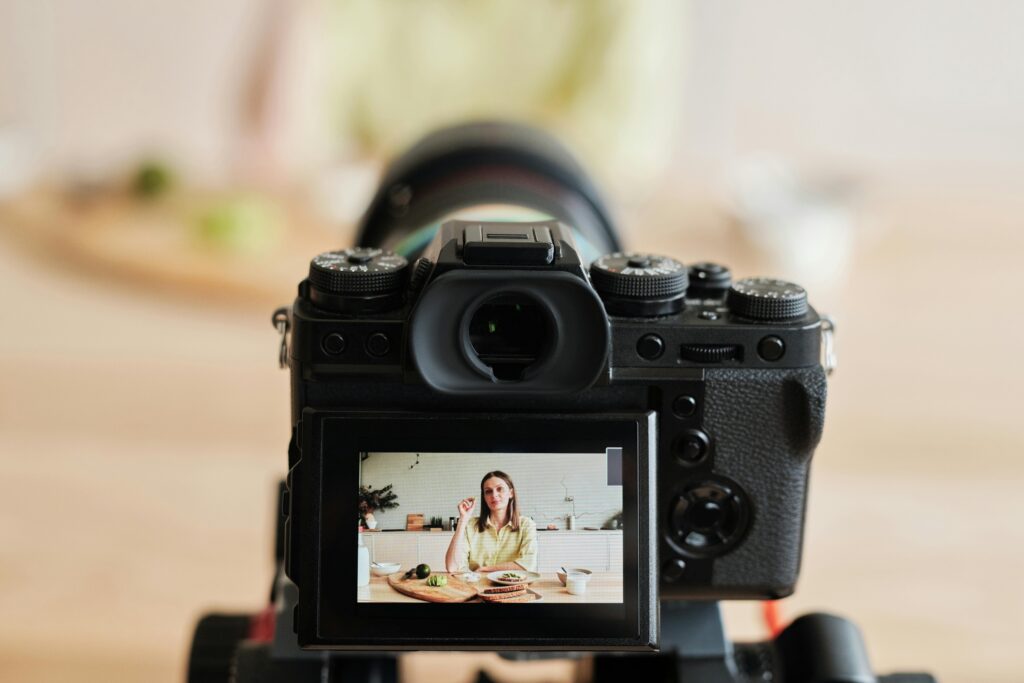If you’ve ever played Pokémon GO or used a filter on Instagram, you’ve experienced augmented reality (AR) firsthand. But what exactly is augmented reality? In simple terms, AR is a technology that overlays digital information onto the real world. This creates an interactive experience that blends virtual elements with your physical environment. As a marketer, understanding AR and its significance in the digital landscape can open exciting doors for your brand. Let’s dive into how augmented reality is shaking up marketing!
What Makes AR So Special?
Augmented reality stands out because it transforms how consumers interact with products. Traditional marketing often relies on static images or videos, but AR takes it a step further. By using AR, you can create immersive experiences that engage customers like never before. Imagine being able to try on a pair of shoes or visualize a new piece of furniture in your home—all from your smartphone!
This technology allows brands to connect with consumers on a deeper level. It engages multiple senses and offers an interactive experience that fosters emotional connections. When you can see how a product fits into your life, you’re more likely to make a purchase. It’s a win-win for both consumers and brands!
AR Marketing Examples: Learning from the Pros
Now that you understand what AR is, let’s look at some fantastic AR marketing examples that highlight its effectiveness. One standout is IKEA’s Place app, which allows you to visualize furniture in your living space before buying it. You simply point your smartphone camera at the spot where you want a new chair or table, and voilà! You can see how it fits in your home. This interactive experience not only helps consumers make informed decisions but also enhances their shopping experience.
Another impressive example is Sephora’s Virtual Artist. This AR feature lets you try on makeup virtually using your smartphone or in-store mirrors. You can experiment with different shades and styles before making a purchase. This kind of augmented reality campaign not only encourages product exploration but also boosts customer confidence in their choices. It’s fun, engaging, and incredibly useful!
These examples show how AR in marketing can create memorable experiences that drive sales. By offering consumers a chance to interact with products in a unique way, brands are more likely to leave a lasting impression.
Interactive Marketing Strategies: Engaging Customers
So, how can you leverage augmented reality in your marketing efforts? The key lies in interactive marketing strategies that put the consumer front and center. AR allows you to create campaigns that encourage participation and engagement. When consumers feel involved, they’re more likely to remember your brand and share their experiences with others.
For instance, consider creating an AR scavenger hunt. You could set up clues that lead users to specific locations or products, unlocking special offers or discounts along the way. This not only drives foot traffic but also builds excitement around your brand. People love a good challenge, and combining it with AR can make your marketing campaign unforgettable.
Additionally, think about using AR to enhance your social media presence. Platforms like Instagram and Snapchat have built-in AR features that allow users to create fun and shareable content. By developing unique filters or effects related to your brand, you can encourage users to engage with your content and share it with their friends. This organic promotion can significantly boost your brand’s visibility.
The Future of AR in Marketing
As technology continues to evolve, the potential for AR in marketing is limitless. Experts predict that more brands will adopt augmented reality to enhance customer experiences. This technology is becoming increasingly accessible, making it easier for businesses of all sizes to implement AR strategies.
Moreover, with the rise of 5G technology, AR experiences will become even more seamless and responsive. Imagine accessing high-quality AR content without lagging or buffering issues! This advancement will make interactive marketing strategies more dynamic and engaging.
In addition, AR can also be a powerful tool for data collection. By analyzing how users interact with your AR campaigns, you can gain valuable insights into consumer behavior. This data can help you refine your marketing strategies and tailor future campaigns to better meet your audience’s needs.
Embracing the AR Revolution
In conclusion, augmented reality is transforming the digital marketing landscape in exciting ways. By offering immersive and interactive experiences, AR engages consumers like never before. Brands that leverage AR marketing examples, such as IKEA and Sephora, show how effective this technology can be in enhancing customer experiences.
As you consider how to incorporate augmented reality into your marketing strategies, remember the importance of creativity and engagement. By focusing on interactive marketing strategies that captivate your audience, you can stand out in a crowded market. The future of marketing is here, and it’s time to embrace the AR revolution! So, are you ready to take your marketing efforts to the next level? The world of augmented reality awaits!

Consumer Engagement: How AR Enhances Customer Interaction with Products
In today’s fast-paced digital world, grabbing consumer attention can feel like trying to catch smoke with your bare hands. Thankfully, augmented reality (AR) is here to help! By creating interactive experiences, AR enhances customer engagement in ways that traditional marketing techniques simply can’t match. Let’s explore how AR transforms consumer interactions with products and creates memorable experiences.
The Magic of Immersive Experiences
One of the most exciting aspects of AR is its ability to create immersive experiences for consumers. Imagine walking into a store and being able to see how a piece of furniture fits into your living room through your smartphone. That’s exactly what IKEA’s Place app offers. You can visualize how different items look and feel in your space before making a purchase. This level of interactivity not only helps you make informed decisions but also makes shopping a fun experience.
AR marketing examples like this one show how immersive experiences can foster emotional connections between consumers and products. When you can see how a product integrates into your life, it becomes more than just an item; it becomes part of your story. This emotional engagement increases the likelihood of making a purchase and boosts brand loyalty.
For more examples of how AR is enhancing consumer experiences, check out this article on AR in retail.
Bringing Products to Life
Augmented reality enables brands to bring their products to life in unique ways. Through AR campaigns, brands can create interactive experiences that allow you to explore products in-depth. For instance, if you’re shopping for cosmetics, brands like Sephora allow you to try on makeup virtually. Their Virtual Artist feature uses AR to let you see how different shades and styles look on your skin before you commit to a purchase.
This level of interactivity not only engages you but also builds confidence in your buying decisions. When you can virtually try on a product, you’re less likely to experience buyer’s remorse. AR campaigns like this one show that when consumers feel empowered, they’re more inclined to complete a purchase.
Additionally, brands can use AR to educate consumers about their products. For example, a beverage company might use AR labels that, when scanned, provide information about the ingredients and sourcing. This transparency fosters trust, making consumers feel more connected to the brand. The more informed you are, the more likely you are to engage with the product!
Visit WebxBoost for the best digital marketing services.
Enhancing the Shopping Experience
AR also enhances the overall shopping experience, whether online or in-store. Imagine walking through a store and using your smartphone to scan products on the shelf. You can instantly access additional information, like reviews or promotions, that help you decide what to buy. This interactive shopping strategy makes the experience more engaging and informative.
For online shopping, AR can bridge the gap between the virtual and physical worlds. You might have encountered brands that allow you to place a virtual try-on feature on their website. This means you can see how a pair of shoes looks on your feet without ever leaving your home! This innovative approach not only makes shopping more enjoyable but also reduces the chances of returns.
Moreover, AR can gamify the shopping experience. Brands can create AR scavenger hunts or challenges that encourage you to explore their products. Not only does this make shopping fun, but it also drives customer engagement and brand loyalty. You’ll remember the brand that made shopping an adventure!
Building Community and Connection
Another significant way AR enhances consumer engagement is by fostering community. When brands create AR experiences, they often encourage sharing on social media. For instance, if you use a fun AR filter on Instagram or Snapchat, you might share it with your friends. This sharing creates buzz around the brand and expands its reach organically.
Brands can also encourage user-generated content through AR campaigns. By allowing consumers to create their own AR experiences, brands can tap into a wealth of creativity. This not only increases engagement but also builds a sense of community around the brand. When you feel part of a community, you’re more likely to remain loyal and engage with the brand long-term.
The Future of Consumer Engagement with AR
In conclusion, augmented reality is a game changer in consumer engagement. By creating immersive experiences, bringing products to life, enhancing shopping, and building community, AR in marketing fosters deeper connections between consumers and brands. As more businesses adopt interactive marketing strategies, the potential for AR to reshape consumer experiences is limitless.
So, are you ready to dive into the world of augmented reality? Whether you’re a brand looking to innovate or a consumer excited about new experiences, AR is here to stay. Embrace the magic of AR, and you’ll find that the future of consumer engagement is not only exciting but also incredibly rewarding!

AR Campaign Examples: Brands Rocking Augmented Reality in Marketing
In the world of marketing, brands are always on the lookout for innovative ways to engage consumers. Augmented reality (AR) has emerged as a powerful tool for creating memorable experiences. Let’s explore some fantastic AR marketing examples that showcase how brands have successfully utilized augmented reality campaigns to captivate their audiences.
IKEA: Transforming Spaces with AR
IKEA is a shining example of how to use AR effectively in marketing. Their innovative IKEA Place app allows you to visualize furniture in your home before making a purchase. You simply point your smartphone camera at the desired space, and the app overlays the furniture in real-time. This immersive experience helps you see how different items fit into your decor.
By using this augmented reality campaign, IKEA reduces the uncertainty that often comes with online shopping. You’re less likely to experience buyer’s remorse when you can see how a product looks in your space. Plus, this interactive marketing strategy creates an engaging shopping experience that encourages exploration and discovery. For more details on IKEA’s AR initiatives, check out their official site.
Sephora: Virtual Try-Ons That Empower Customers
Sephora has also embraced augmented reality in a big way. Their Virtual Artist feature allows you to try on makeup virtually using your smartphone or in-store devices. You can experiment with different shades and styles without ever having to apply a single product. This AR marketing example empowers you to make informed decisions about your beauty products.
The beauty of this augmented reality campaign is that it enhances the shopping experience while reducing the likelihood of returns. When you can see how a lipstick looks on you before buying, you’re more confident in your choice. Sephora’s AR strategy not only engages customers but also builds trust in their offerings. To see how this feature works, visit Sephora’s Virtual Artist page.
Pepsi: Bringing Fun to the Vending Machine
Pepsi took a unique approach to AR with its “Pepsi Max Unbelievable” campaign. They transformed a regular vending machine into an interactive experience that shocked and delighted consumers. When customers approached the machine, they were treated to a series of AR experiences, including a virtual alien invasion and a dinosaur encounter.
This augmented reality campaign not only generated excitement but also created shareable moments that spread quickly on social media. Pepsi effectively used interactive marketing strategies to engage consumers in a fun and memorable way. By turning a mundane vending machine into an engaging experience, Pepsi captured the attention of both consumers and the media. You can find out more about this campaign here.
L’Oreal: Making Beauty Accessible
L’Oreal is another brand that has successfully utilized AR in marketing. Their AR app, Makeup Genius, allows users to apply makeup virtually using their smartphone cameras. You can try on different products, from foundations to lipsticks, without ever stepping foot in a store. This innovative approach makes beauty accessible and fun!
The app uses facial recognition technology to accurately apply makeup to your face in real-time. This not only enhances the shopping experience but also encourages experimentation. You can discover new looks and products without the commitment of buying them first. L’Oreal’s use of augmented reality campaigns demonstrates how brands can empower consumers to explore their beauty options. Learn more about L’Oreal’s AR efforts on their website.
Nike: Elevating Sneaker Shopping
Nike has also jumped on the AR bandwagon with its Nike Fit app. This innovative tool helps customers find their perfect shoe size by using AR technology. Simply scan your feet with the app, and it will recommend the best sizes for various Nike shoes.
This AR marketing example not only takes the guesswork out of shoe shopping but also enhances customer satisfaction. When you can confidently select the right size, it reduces the chances of returns. Nike’s commitment to using augmented reality in marketing shows how the brand prioritizes customer experience. Check out more about Nike Fit here.
The Future of AR in Marketing
These AR marketing examples highlight the creative ways brands are leveraging augmented reality to engage consumers. From IKEA’s furniture visualizations to Pepsi’s unforgettable vending machine experience, the possibilities are endless. As AR technology continues to evolve, we can expect even more innovative campaigns that captivate and connect with consumers.
The beauty of augmented reality lies in its ability to create interactive experiences that foster emotional connections. When brands embrace AR in marketing, they not only enhance the shopping experience but also build loyalty and trust. So, whether you’re a brand looking to innovate or a consumer excited about new experiences, the world of AR is full of potential waiting to be explored.
In conclusion, augmented reality is transforming the marketing landscape, and these examples demonstrate just how impactful it can be. As brands continue to experiment with AR, you can expect even more engaging and immersive campaigns in the future. Are you ready to embrace the AR revolution? The future of marketing is here, and it’s more exciting than ever!

Future of AR Marketing
As we look ahead, the future of augmented reality (AR) in marketing is bursting with potential. This technology is not just a passing trend; it’s set to revolutionize how brands connect with consumers. Let’s explore some exciting future trends in AR marketing and how they’ll influence consumer behavior.
Enhanced Personalization and Customization
One of the most significant trends we can expect is enhanced personalization through augmented reality. Brands will use AR to create customized experiences tailored to individual preferences. Imagine walking into a store and using your smartphone to see products that match your style and needs. This personalized approach will make shopping feel more relevant and engaging for you.
For instance, AR marketing examples like virtual fitting rooms will become more sophisticated. You’ll be able to try on clothes or accessories virtually, seeing how they look on you in real-time. This level of customization will not only boost your confidence in making purchasing decisions but will also reduce returns, which is a win-win for both consumers and brands. As more companies adopt these interactive marketing strategies, the shopping experience will become more enjoyable and efficient.
To learn more about how personalization is reshaping retail, check out this article on personalized shopping experiences.
Seamless Integration of AR and E-commerce
As e-commerce continues to grow, the integration of AR in online shopping will become increasingly seamless. You might already have seen how brands like Wayfair allow you to visualize furniture in your space through their app. This integration will evolve further, enhancing your online shopping experience.
In the near future, expect to see AR tools that let you interact with products in a more immersive way. For instance, you could rotate a 3D model of a product, zoom in for details, and even see how it fits into your everyday life. This will help you make informed decisions without the need to visit a physical store.
Moreover, brands will leverage AR to create interactive product demos. Imagine watching a video that not only shows the product but also allows you to engage with it right through your screen. This trend of blending AR with e-commerce will likely boost online sales and improve customer satisfaction. For further insights into the future of e-commerce, check out this resource on trends in online shopping.
Gamification and Interactive Experiences
Another exciting trend is the gamification of AR marketing. Brands will increasingly incorporate game-like elements into their augmented reality campaigns to enhance consumer engagement. You might participate in treasure hunts or challenges that encourage you to explore products while having fun.
For example, imagine a cosmetics brand launching an AR scavenger hunt where you search for virtual items in your local area. Completing these challenges could earn you discounts or rewards. This not only makes shopping enjoyable but also drives foot traffic to stores, as consumers will be eager to participate.
Gamification will also create memorable experiences that consumers will want to share on social media. When you can combine entertainment with shopping, it encourages word-of-mouth marketing, which is invaluable for brands. For more on how gamification is changing marketing, check out this article on the power of gamification.
AR and Social Media: A Match Made in Heaven
Social media platforms are already embracing augmented reality, and this trend will only grow stronger. You’ve likely seen brands using AR filters on Instagram or Snapchat, allowing you to interact with their products in a fun way. This kind of engagement not only entertains but also builds brand awareness.
In the future, we can expect to see even more sophisticated AR features on social media. Brands will create immersive experiences that encourage user-generated content, making you feel like part of the brand’s story. Imagine using an AR filter to try on clothes or accessories and sharing your look with friends. This interactive marketing strategy creates a buzz that can lead to increased sales.
As AR technology advances, social media will become a primary platform for brands to showcase their products. With the right AR campaigns, brands can effectively engage consumers and drive traffic to their websites or physical stores. For more insights on social media and AR, check out this article on AR in social media marketing.
The Future of AR Marketing
In conclusion, the future of AR in marketing is not just bright; it’s dazzling! Enhanced personalization, seamless integration with e-commerce, gamification, and social media engagement are all trends that will shape the way you interact with brands. As AR technology continues to evolve, you can expect to see even more innovative and interactive marketing strategies that enhance your shopping experience.
So, whether you’re a brand looking to innovate or a consumer excited about new experiences, the possibilities with augmented reality are endless. Embrace the future of AR marketing, and get ready for a shopping experience that’s not just about buying products but about engaging with them in meaningful ways! The world of AR is waiting for you to jump in!



